Joint Cost Allocation Statement
The Lupus Foundation of America (Foundation) applies the standards set by the Financial Accounting Standards Board (FASB) and allocates its joint cost programs. Joint allocation costs, under guidelines and criteria in accounting standards, allow a portion of certain materials to be split between program expenses and fundraising expenses. The Foundation’s allocation of joint costs is reviewed by an external auditor as part of an annual audit of the Lupus Foundation of America’s financial statements. With allocation of joint costs, our program expenses are at 78 percent but it is substantially reduced to 65 percent when our joint cost program expenses are classified as all fundraising expenses. Our role as a patient advocacy organization requires us to educate people about lupus, the signs and symptoms of the disease and the services we can provide to help people with lupus while we work to find treatments and cures and motivate individuals to join in the effort to help put an end to lupus.
The Value of Outreach and Education in Materials Identified As Having Joint Allocation Costs
Public outreach and education efforts are critical to fulfilling the Lupus Foundation of America Foundation’s mission and meeting our important strategic objectives: reduce the time to diagnosis, ensure people with lupus have an arsenal of safe and effective treatments, and expand direct services and increase access to treatment and care. We conduct many initiatives to raise public awareness of lupus and to improve understanding of the physical, emotional and economic impact of lupus on individuals, families and society.
Our outreach and education efforts serve to build support for public policies that directly benefit people with lupus. For example, along with industry, the largest source of funding for lupus research is the federal government through agencies such as the National Institutes of Health, Centers for Disease Control and Prevention, Veterans Administration, Department of Defense, Centers for Medicare and Medicaid, and the various offices within the U.S. Department of Health and Human Services that have an interest in lupus. So by having the public understand lupus helps boost our efforts at increasing funding for lupus research.
The Lupus Foundation of America uses every opportunity to educate the public about lupus because awareness of lupus symptoms improves early recognition, detection and diagnosis of the disease, a key goal of our Foundation. Some key initiatives that include fundraising, such as our direct mail solicitation program, household goods donation program, and our Walk to End Lupus Now® events, reach hundreds of thousands (and in some programs millions) of people throughout the United States and therefore we provide a great opportunity to include and implement education and awareness efforts.
These outreach efforts provide an opportunity for the Foundation to educate the public about lupus. For example, our donation appeals include a symptoms checklist or a petition that urges members of Congress to provide more funds for lupus research. During our Walk to End Lupus Now events, we distribute literature, show videos, and have doctors and other health professionals on hand to present lectures about lupus and answer questions.
Consequently the costs associated with these activities are allocated as joint allocation costs, which are allocated to fundraising, public education, information and advocacy, along with other ongoing activities that the Foundation conducts in this important program area. These ongoing activities include public awareness campaigns, bringing our traveling exhibit bus to shopping centers, colleges and churches, and attending health fairs and civic meetings to provide information about lupus.
All of these activities combined help the Lupus Foundation of America fulfill its important mission and serve to help to solve the cruel mystery of this unpredictable and misunderstood disease.



